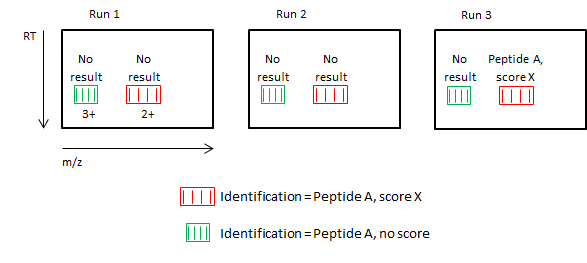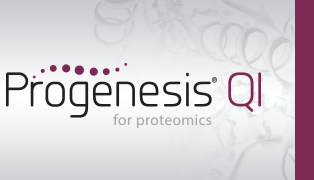Why do some of my peptide ions have identifications with no score?
This is because of the way Progenesis QI for proteomics carries out deconvolution of peptide ions for the combination of identification data across all the ions derived from a peptide.
Given one peptide ion (a charge state of a peptide consisting of a series of isotopic peaks), it is possible to calculate where other charge states would be present in the m/z profile, using the known m/z value and assuming ionisation by H+ to derive the neutral mass of the peptide.
This allows the transfer of MS2 / MSE identification data across the various charge states of a peptide, in order to provide the most complete information possible about the peptide’s identity. Where an identification result for one charge state is not present in another, it is transferred to the other as a result with a 'null' score (no score is entered). This means that every peptide ion carries all the identification results from all others derived from the same peptide.
The 'null' score by a peptide ion for a given identification result indicates that an identification has been solely derived from this process in the case of that peptide ion.
The sharing process is entirely based on the accurate MS1 data, and so is a robust way to amalgamate identification data across a peptide.
The process is simplistically illustrated below. For three runs, a particular peptide has two charge states, 2+ and 3+. The 2+ charge state has MS2 data in one run providing a confident ID, and no other MS2 data were originally obtained. The 2+ charge state ID is firstly transferred across all the runs (identification data for the same peptide ion are always combined as part of the no missing values approach). However, the two charge states are from the same peptide and so the same ID can be applied to deconvoluted 3+ charge state as well, and so result A is copied across to the 3+ charge state peptide ion. This is done with a null score, to indicate that this has resulted from a deconvolution-based transfer, and not from direct MS2 data for the 3+ charge state.






